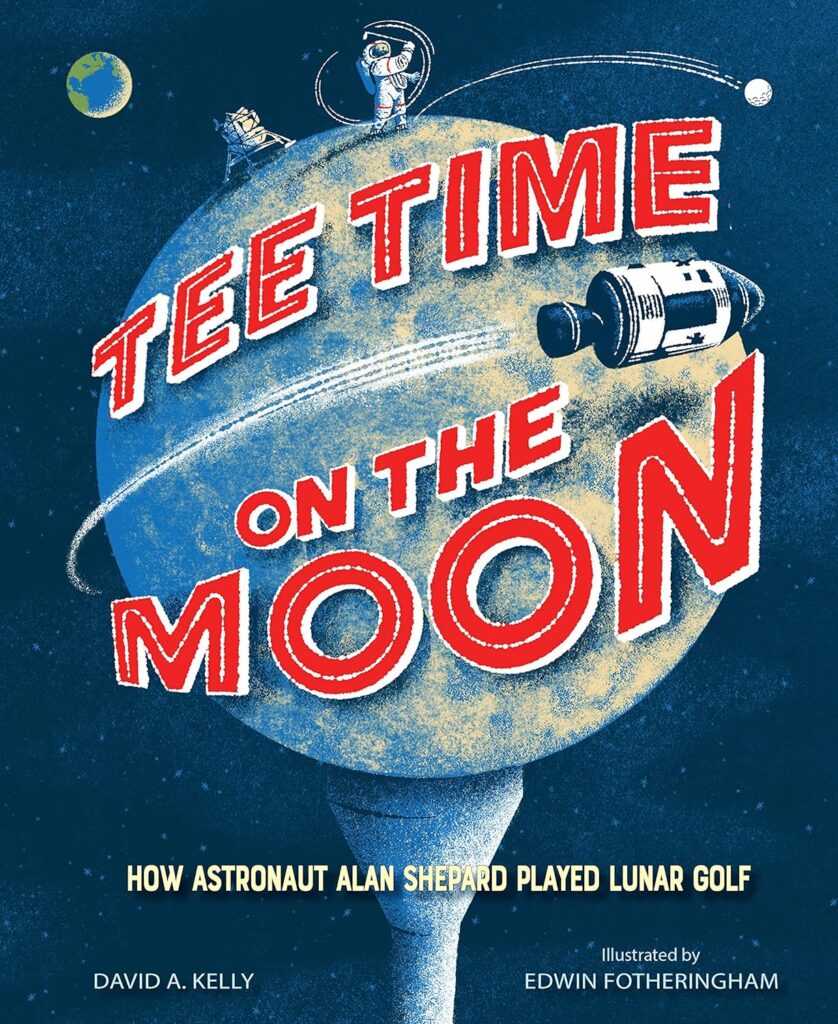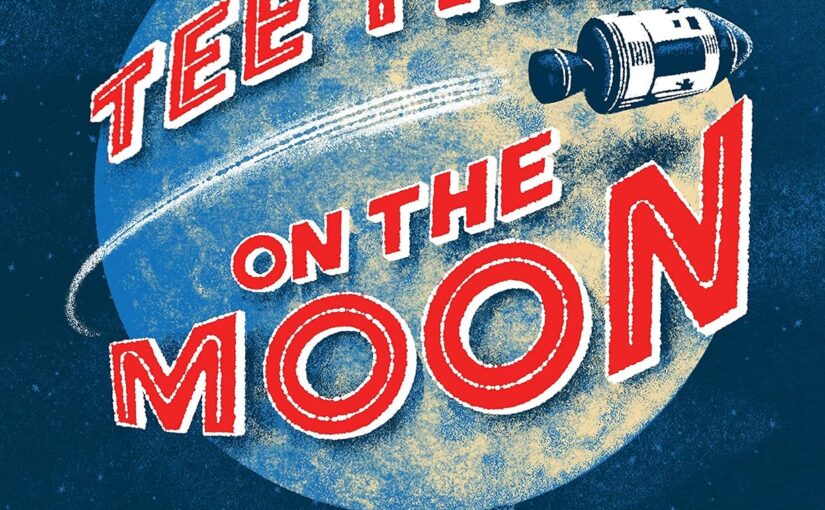At times, science should be silly, especially if your audience is young and needs to look at things from a different angle. This is the angle that asks questions you’ve never thought about. It’s the sly questioning of whether or not there’s a rhinoceros in the room or a STEM-based story about the time an astronaut played golf on the moon. Tee Time on the Moon is an illustrated book aimed at early to mid-elementary school audiences, but whose curious nature will lend itself to those slightly younger, in addition to older than that. This is due to the left-field thinking that kids would have as to playing golf on the moon. However, the book’s layout also lends itself to welcoming young readers who might be intimidated by the story or the text that they see as out of this world.

Let’s address the former issue first and agree that playing golf on the moon can be a heady topic for elementary ages. A person on the moon has never happened in their lifetime and the concept of someone landing there might not resonate with them from a scientific perspective. What’s the benefit of landing there, where is your phone, why should I care and if it mattered then Mr. Beast would’ve already made a video of him doing it. All of these questions and countless others will populate your appropriate-aged child’s brain before they have a chance to earnestly answer you.
Tee Time on the Moon starts simple. There are just a couple of lines on every two-pages. This allows the action to do the driving as kids get used to thinking about and seeing astronauts navigating their way on the moon’s surface. Once Apollo 14 landed on the moon its mission was to collect rocks from the surface. The previous lunar missions proved their feasibility and by studying rocks we’d be able to more accurately age the moon and determine its climate through the ages.
About halfway through the book the text on the pages gets slightly longer and the words get a little more complex. This segues nicely to the part of the story where NASA engineers and astronaut Alan Shepard worked together to allow for a photo shoot of sorts to happen after their business of rock collecting was completed. The engineers found a clever way to repurpose one of their rock tools into a moon-based golf club by popping a different head on it. This is when Shepard put one of the golf balls on the moon’s virgin surface and proceeded to see if the lack of gravity would allow his swing to do its thing.
It’s also when the science of Tee Time on the Moon kicks in for those younger audiences. Everyone under a certain age knows that there’s much less gravity on the moon. People are proportionately as strong as ants up there and the lack of gravity just might let you throw a baseball a mile! Of course, that’s what people thought, Shepard went on to hit the ball but didn’t make contact that was too strong. He tried it two more times, but it wasn’t until the fourth attempt that he was able to whack the ball to his ability. He said that the ball must’ve gone for miles, and it did fly out of their field of vision, but it was time to go.
About 50 years later more science entered the fray when Andy Saunders, a British photographer, used software to look at the lunar golf course to determine how far he really hit the ball. He was able to zoom in on his astronaut footprints, see the divots the golf club made and even locate the long-lost lunar golf balls. That fourth and final drive went 120 feet and while that’s about a hundred feet farther than I could hit it, the drive was leagues shorter than the herculean drive that lives in everyone’s imagination.
But that’s not the point; it was an Earth-bound sport that was played on the moon! It captured the imagination of people around the planet in 1971 and made the already white-knuckle story of “man walks on moon”, more lighthearted and approachable by playing golf. The PR value of the story to NASA gave the rocks personality and put an added value on the story beyond the science.
The final couple of pages in Tee Time on the Moon are for older readers. They take a deep dive into the timeline of all of the Apollo missions and why they mattered, in a way that upper elementary school readers can explore by themselves. This area won’t be confused with the text in the book at all. It features several real photographs from the Apollo 14 mission, including one of the area where Shepard created his driving range.
Moreover, Tee Time on the Moon is a fun illustrated book. It will capture the imagination of young readers and perhaps introduce those ages to something that they don’t know. It could inspire silly thoughts that are born from a STEM landscape and create an idea that will be the go-to image for the next generation of explorers. Even at its base level, this is a book that will leave a smile on faces, get them to ask questions and think just a little bit.
Tee Time on the Moon: How Astronaut Alan Shepard Played Lunar Golf is by David A. Kelly with illustrations by Edwin Fotheringham and is available on Calkins Creek, an imprint of Astra Books for Young Readers.
There are affiliate links in this post.





 Facebook
Facebook Twitter
Twitter Flickr
Flickr GooglePlus
GooglePlus Youtube
Youtube